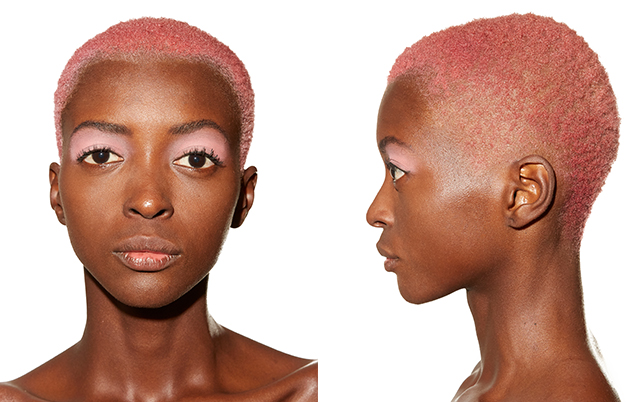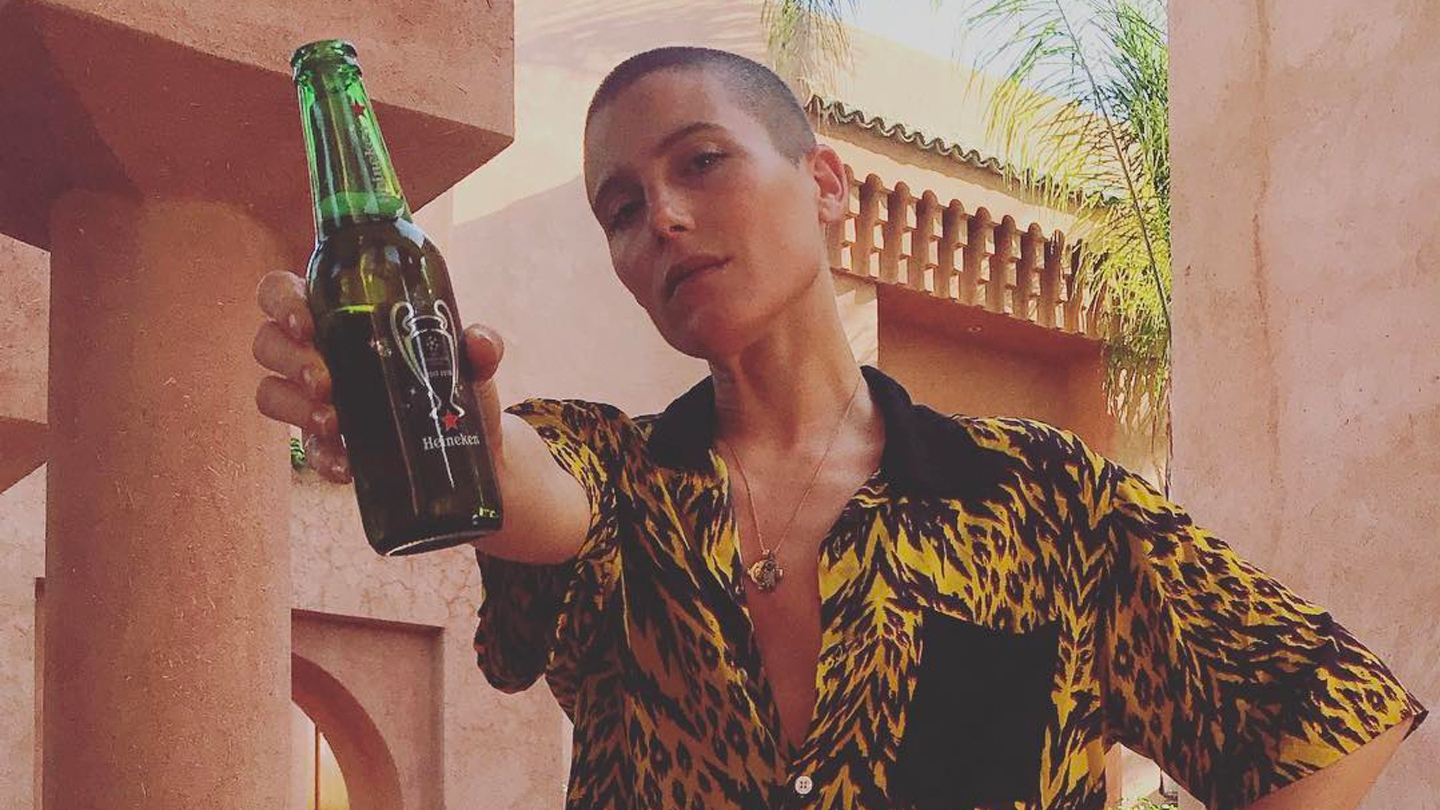Once the preserve of counterculture, the buzz cut is becoming more prevalent across all corners of society. In fact, it was everywhere at the spring/summer 19 shows, adopted by many of the season’s most-watched faces. Dree Hemingway’s runway comeback was made all the more mega due to her freshly shorn head, while Anna Rubin, Amira Pinheiro and Akiima all wore their hair in tight crops.
To peg the buzz cut as simply the season’s biggest hair trend, ready to be replaced by next season’s 70s shag or bowl cut, would be to do the style’s forebears a major injustice. Its prominence is so deeply rooted in the history of female and non-binary empowerment, that in this post-Weinstein, mid-Kavanaugh era you can’t help but see its political significance.
Like the punks whose buzz cuts encapsulated their rebellious aesthetic in the 70s, Grace Jones used her tight crop as a symbol of her androgynous strength in the 80s. Since then, it’s become an important symbol in queer and lesbian identity, a rebuttal to those who suggest femininity is best performed underneath a veil of long hair. The buzz cut is also an important emblem within black culture; sometimes it’s adopted simply to challenge western beauty ideals, other times as a cathartic ‘shedding’ of relaxed or chemically-processed hair before the regrowth of natural afro hair, a theme explored in Netflix’s new film Nappily Ever After.
Add to that the shaved heads of characters such as Stranger Things’ Eleven and celebrities like Rose McGowan, and it cements the theory that the buzz cut has become synonymous with feminine strength, a clap back at ingrained beauty and gender norms. And considering the mood (both in fashion terms, and politically) this season, in which we’re all trying to figure out what it means to be a strong woman in what is still a heavily male dominated world, the buzz cut feels more powerful — and necessary — than ever.
It was this very kind of strength that hairstylist and Redken’s Global Creative Director Guido wanted to portray when he shaved the heads of a select few models backstage at Marc Jacobs’ spring/summer 19 show. “The concept of the show was to showcase different personalities in a glamorous, diverse way,” he told i-D. “The girls felt empowered by cutting their hair and abandoning the ideas of femininity.” He also notes that it’s a reflection of the changing conversation around beauty. “A girl can now present herself to the industry in the way she feels the most beautiful and comfortable.The more we see diverse ideas of beauty, the more real people feel included in the industry. It’s a very open arena for people to express themselves.”

As well as sticking a proverbial finger up to society, shaving your head can have profound effects on your psyche. “We have more control over what our hair looks like than, say, how tall we are and so [changing it] can feel meaningful because we can affect it at will and use it as a way to reflect our identity,” explains Dr Sheri Jacobson, founder and director of Harley Therapy. “We can use hair to refuse standards of beauty, to refuse to conform, or even to be less visible or looked at. Or perhaps we just want to claim back the time that we are ‘supposed’ to spend on our hair and use it in more empowering ways.”
Adwoa Aboah has been pretty outspoken about how her (albeit accidental) buzz cut gave her a newfound sense of freedom. “After many years of hating my hair, I finally felt no attachment to it. I was empowered, and for the first time, I don’t need to carry around a large plastic bag of products, and it doesn’t take me an hour to find all the hairpins after a night out,” she wrote in a personal essay for Teen Vogue.
For Dree Hemingway, shaving her head liberated her from insecurity. “My hair was my security blanket, but it was also my girliest aspect — it took my tomboyishness and made it feminine,” she told Vogue US. “I cut off a lot of insecurity in a way. I don’t compare myself to other girls anymore, which is something I used to do a lot. And it’s made me really aware of how I treat my body, because I can’t hide behind my hair. I just take care of myself more. Buzz cut Dree is really happy.”
New face Anna Rubin’s self-administered buzz cut garnered a lot of attention this season too. “About three years ago, I was on a meditative camping trip in the desert and one night I dreamt that I was some badass crime investigator with a shaved head,” she told i-D. “I remember thinking that I looked ugly in the dream, but it felt so great that I really didn’t care. I kept yearning for that buzzed feeling to come back but realised that I’d have to do it for real or I’d never be satisfied.” She gathered her friends and they took turns to shave sections of her hair off. “I don’t remember ever being scared, just hyped on an all-natural endorphin rush. I felt ecstatic.” It changed how she felt about modelling too. “After about a year of playing with multiple hair colours, undercuts, side cuts and eventually the full buzz, the idea of modelling became more appealing to me. I don’t think I would’ve wanted to sign with an agency again had I not taken time to experiment with my self-expression first.”
Of course, the current wave of buzz cuts may be left to grow out, but the legacy of this subversive hairstyle will undoubtedly persist. It may be an emblem of the fight against gender and beauty norms, but it’s a fight that’s just getting started.


